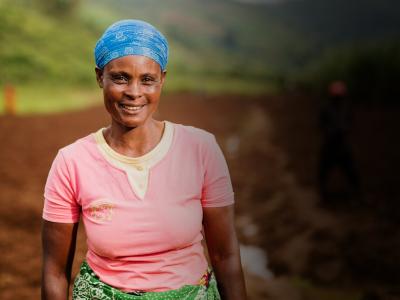WfWI supporter Suzanne Rogge shares what motivates her and how getting involved makes a difference in her life.
WfWI supporter Suzanne Rogge shares what motivates her and how getting involved makes a difference in her life.
1. Can you tell us a little about yourself? Where are you from, what do you do, what are your hobbies/interests?
As a native Californian living in the San Francisco Bay Area I enjoy all the beauty, diversity, and artistic stimulation this area offers. I am in the next phase of my life after a long career in corporate retail. This phase includes supporting my daughter through middle school, building a jewelry design business, and contributing either financially or with my time towards causes that speak to me. Issues that resonate deeply with me are supporting women and children who live in challenging circumstances as well as protecting the environment for future generations.
I have been designing and making jewelry since I was little; there is something primally satisfying to me about working with silver, copper and gold, beautiful stones, and fire. I love to combine metals, and I have a special passion for opals. Drawing inspiration from the Eastern, the ancient, and nature, some say my designs have an organic, modern sensibility. Both my parents were artists in their own way. My mother was a watercolorist drawing inspiration from the California coastline, and my father designed and built custom homes with European aesthetics. My entire family has a passion for working with our hands.
I currently have an online store in the Etsy marketplace selling my one of a kind jewelry designs. Because I feel profoundly lucky to finally have the means and time to design jewelry, I donate a portion of my sales to both Women for Women International and our local food bank. Last year I donated over $500 to non-profits.
2. Why do you support women survivors of war and Women for Women International?
I am keenly aware of the small odds of being born middle class in this country with all the advantages and opportunities that come with that good fortune. That other women in this country as well as throughout the world struggle to stay alive, feed their families, and live in a safe community resonates with me deeply. I have been a supporter of WfWI for a long time and love the work they do to help women in war-torn areas of the world get back on their feet again, become self-sustaining and self-empowered. I can’t think of a more awesome model than that when assisting others.
3. Why do you think it’s important for people to take action and get involved in their communities on behalf of women around the world?
I can only speak for myself regarding this question. When the end of my life comes, I want to look back and know I lived responsibly, compassionately, that I did what I could to make the world a better place, and that I was a good role model for my daughter. I have the capacity and wherewithal in my life to do that. I don’t judge others, because we all have different challenges. As a two-time survivor of cancer I am also aware that there is no time like now to take action in all matters that mean something to me.
4. What are your hopes for the women we serve around the world?
For the women that WfWI serves it would be my hope that these survivors know there are individuals throughout the world who care about them and take great joy in their recovery. In regions where women have few, if any, rights and liberties, it is my hope that leaders of wealthier nations take steps to demand equal status and human rights for women, possibly making those demands a prerequisite to foreign aid. It has long been established that when women are flourishing in a community, the general standard of living improves from which everyone benefits. That this fact becomes accepted and promoted in traditionally male-dominated societies is my greatest hope.
5. Anything else you’d like to say to fellow supporters of Women for Women International?
This is a superb community in which to participate, and I am delighted and honored to be highlighted in this blog on the WfWI website.
